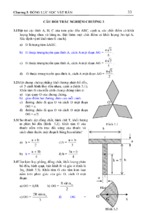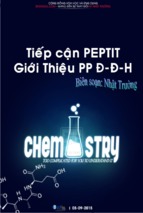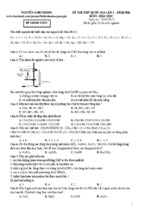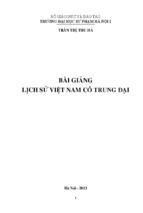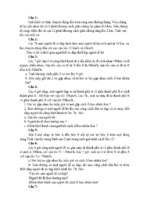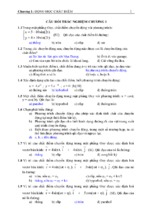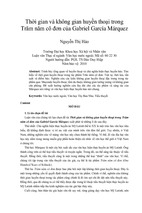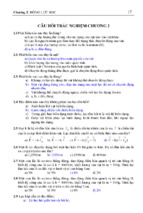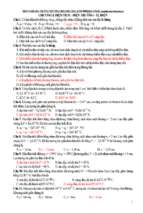OPTICAL MATERIALS
This Page Intentionally Left Blank
Optical Materials
Joseph H. Simmons
University of Florida,
Gainesville, Florida
and
Kelly S. Potter
Sandia National Laboratories, Albuquerque,
New Mexico
ACADEMIC PRESS
An Imprint of Elsevier
San Diego San Francisco N e w York Boston
London
Sydney
Tokyo
This book is printed on acid-free paper. ( ~
Copyright © 2000 by Academic Press
All rights reserved.
No part of this publication may be reproduced or transmitted in any form or
by any means, electronic or mechanical, including photocopy, recording, or
any information storage and retrieval system, without permission in
Permissions may be sought directly from Elsevier's Science and Technology Rights Department in
Oxford, UK. Phone: (44) 1865 843830, Fax: (44) 1865 853333, e-mail:
[email protected].
You may also complete your request on-line via the Elsevier homepage: http://www.elsevier, com by
selecting "Customer Support" and then "Obtaining Permissions".
(Cover image: Diffraction of white light from a thin film etched grating
[K.S. Potter, B.G. Potter, Jr. and M.B. Sinclair, Sandia National
Laboratories]).
ACADEMIC PRESS
An Imprint of Elsevier
525 B Street, Suite 1900, San Diego, CA 92101-4495, USA
http://www.apnet.corn
Academic Press
24-28 Oval Road, London NWl 7DX, UK
http://www.hbuk.co.uk/ap/
Library of Congress Catalog Card Number: 99-65137
ISBN-I 3: 978-0-I 2-644140-6
ISBN-10:0-12-644140-5
Printed in the United States of America
05 06 07 08 09 MB 9 8 7 6 5 4 3 2
Dedication
With deep appreciation to our spouses, Cate and B. G., for their enduring
support and indispensable assistance with this project.
This Page Intentionally Left Blank
Contents
Preface
xiii
Chapter I
Wave propagation
Introduction
Waves
The electromagnetic spectrum
Mathematical waves
Electromagnetic waves
Propagation characteristics
Dispersion
Kramers-Kronig relations
Wave-particle duality
Phonons
Measurements
1.11.1 Ruled gratings
1.11.2 The grating spectrometer
1.11.3 Fast Fourier transform spectrometers
1.11.4 Microscopes
Appendix 1A Solution of the wave equation by transform methods
Appendix 1B General solution for propagation vectors
Appendix 1C Kramers--Kronig relations
1
1
2
5
12
16
22
25
28
31
32
34
34
37
41
43
45
48
50
Chapter 2 Optical properties of conductors
57
57
61
68
69
71
75
76
78
79
79
1.1
1.2
1.3
1.4
1.5
1.6
1.7
1.8
1.9
1.10
1.11
2.1
2.2
2.3
2.4
2.5
2.6
2.7
2.8
Introduction
Atomistic view: Drude model
Plasma frequency
Band structure in metals
2.4.1 Density of states
Coloration in metals
Coloration by means of small metal particles
Optical properties of superconductors
Measurement techniques
2.8.1 Photoacoustic absorption spectroscopy
vii
viii
Contents
2.8.2 Differential reflection spectroscopy
Appendix 2A Solution of the Mie theory equations
Chapter 3 Optical properties of insulators--Fundamentals
3.1
3.2
Introduction
Harmonic oscillator theory
3.2.1 Classical model (Lorentz)
3.2.2 Quantum mechanical treatment
3.3 Selection rules for transitions between atomic levels
3.4 Propagation of light through insulators
3.4.1 Refractive index and dispersion
3.4.1.1 Clausius-Mosotti equation
3.4.1.2 Dispersion
3.4.1.3 Composition dependence and calculations of
the refractive index
3.4.1.4 Temperature dependence of the refractive index
3.4.2 Reflection and transmission
3.4.3 Nonspecular reflection
3.4.4 Optical attenuation
3.4.5 Ligand field theory
3.4.6 Optical scattering
3.4.6.1 Rayleigh and Brillouin scattering
3.4.6.2 Mie scattering
3.4.6.3 Brillouin scattering and the Landau-Placzek
ratio
3.4.7 Phonons, Raman scattering, and infrared absorption
3.5 Measurement techniques
3.5.1 Measurements of refractive index
3.5.1.1 Abbe refractometer
3.5.1.2 Minimum-deviation prism goniometer
3.5.1.3 Refractometers
3.5.1.4 Ellipsometry
3.5.1.5 Becke line method
3.5.1.6 Femtosecond transit time method
3.5.2 Infrared absorption and Raman scattering
measurements
Appendix 3A Quantum mechanical treatment of the simple
harmonic oscillator
80
81
85
85
89
89
91
95
98
99
99
100
108
108
110
117
119
124
126
127
131
132
132
134
134
134
135
136
137
139
140
141
144
Contents
Appendix 3B
Appendix 3C
ix
Calculation of the refractive index of glass
Ligand field theory concepts
Chapter 4 Optical Properties of I n s u l a t o r s m
Some Applications
4.1
Thin films
4.1.1 Mathematical treatment
4.1.2 Fabry-Perot oscillations
4.1.3 Ellipsometry measurement
4.2 Glasses, Crystals, and birefringence
4.3 Photochromic and electrochromic behavior
4.4 Oxides, chalcogenides, and halides
4.5 Optical plastics
4.6 Sources of color
4.6.1 Emission
4.6.2 Absorption
4.6.3 Reflection
4.6.4 Dispersion
4.6.5 Scattering
4.6.6 Interference colors
Appendix 4A Alternate calculation of multiple film stacks
Chapter 5 Optical Properties of Semiconductors
5.1
5.2
5.3
5.4
5.5
5.6
5.7
Introduction
Free-electron gas (Sommerfeld theory)
Nearly free-electron model
5.3.1 Bloch theory
5.3.2 Density of states
Band structure
Impurity states and lattice imperfections
5.5.1 Donor and acceptor bands
5.5.2 Band tails
5.5.3 Excitons
5.5.4 Donor-acceptor pairs
5.5.5 Amorphous semiconductors
Carrier densities
5.6.1 Nondegenerate semiconductors
5.6.2 Degenerate semiconductors
Absorption and photoluminescence
151
155
159
159
159
165
168
169
172
174
176
178
180
180
182
182
183
184
187
191
191
193
194
195
199
202
210
210
211
212
214
215
215
216
218
220
x
Contents
5.7.1 Direct-gap semiconductors
5.7.2 Indirect-gap semiconductors
5.7.3 Heavily doped semiconductors
5.7.4 Transitions between band tails
5.7.5 Exciton absorption
5.7.6 Defect-associated transitions
5.7.7 Luminescence
5.7.8 Nonradiative processes
5.7.9 Polaritons
5.8 Measurements
5.8.1 Polarized light
5.8.2 Absorption
5.8.3 Photoluminescence
5.8.4 Heavily doped semiconductors
5.8.4.1 Acceptor-band absorption and luminescence
5.8.4.2 Donor-band absorption
5.8.5 Differential reflection spectroscopy
5.8.6 Summary of optical methods
5.9 Materials and properties
5.9.1 Fabrication and growth
5.9.2 Color
5.9.3 Properties
5.9.3.1 Bandgap energies
5.9.3.2 Contact potentials
5.10 Quantum well structures, quantum wires, and quantum dots
Appendix 5A Derivation of the carrier concentration equation
Appendix 5B Derivation of absorption from direct interband
transitions
Appendix 5C Band structure of semiconductors
265
268
Chapter 6 Optical Gain and Lasers
6.1 Introduction
6.2 Spontaneous emission
6.3 Line shapes
6.3.1 Homogenous line broadening
6.3.2 Inhomogeneous line broadening
6.4 Stimulated emission and absorption
6.5 Absorption and amplification (gain)
6.6 Operational characteristics of lasers
273
273
274
274
275
276
277
279
280
223
225
227
227
229
231
231
233
234
237
237
241
242
245
245
246
246
247
247
247
253
255
255
255
259
264
Contents
xi
6.6.1 Three-level, four-level, and n-level lasers
6.6.2 Gain and gain saturation
6.6.3 Hole burning
6.7 Laser cavity characteristics
6.7.1 Fabry-Perot laser cavities
6.7.2 Population inversion in three-level and four-level
lasers
6.7.3 Issues of output power coupling in laser cavities
6.7.4 Issues of modelocking in laser cavities
6.7.4.1 Acoustic Bragg diffraction
6.7.4.2 Saturable absorber (bleachable dye)
6.7.4.3 Giant pulse-Q-switch
6.7.5 Laser efficiency
6.8 Examples of laser systems
6.8.1
Ruby lasers
6.8.2
Nd 3+:YAG lasers
6.8.3
Neodynium-glass lasers
6.8.4
Tunable titanium sapphire lasers
6.8.5
Tunable alexandrite lasers
6.8.6
Color center lasers
6.8.7
Fiber lasers and erbium-doped fiber amplifiers
6.8.8
Helium-neon lasers
6.8.9
Argon-ion and krypton-ion lasers
6.8.10 Helium-cadmium lasers
6.8.11 Excimer lasers
6.8.12 Nitrogen gas lasers
6.8.13 Carbon dioxide (CO2) lasers
6.8.14 Copper vapor lasers
6.8.15 Organic dye lasers
6.8.16 Free-electron laser
6.9 Semiconductor lasers
6.9.1 p-n Junctions
6.9.2 Degenerate p-n junction lasers
6.9.3 Heterojunction lasers
288
289
291
293
294
295
296
297
297
298
300
301
305
305
3O6
3O7
309
310
311
312
312
314
315
317
318
318
319
321
Chapter 7 NonLinear Optical Processes in Materials
7.1 Introduction
7.1.1 Linear materials
7.1.2 Nonlinear processes
325
325
326
326
280
281
284
285
285
xii
Contents
Mathematical treatment
7.2.1 The anharmonic oscillator
7.2.1.1 Optical linearity--Simple harmonic oscillator
7.2.1.2 Second-order optical nonlinearity-Anharmonic
oscillator
7.2.2 Third-order optical nonlinearity
7.3 Second-order susceptibility
7.3.1 Materials
7.3.1.1 Perovskites
7.3.1.2 Poled polymers
7.3.1.3 Poled glasses
7.3.1.4 Surfaces
7.3.2 Systems that use the ~(2) behavior of materials
7.3.2.1 Second harmonic generation
7.3.2.2 Optical parametric oscillation
7.4 Third-order susceptibility
7.4.1 Nonlinear index and absorption
7.4.1.1 Transparency region
7.4.1.2 Infrared region
7.4.1.3 Two-photon absorption region
7.4.1.4 Electronic processes in the band-edge region
7.4.1.5 Other sources of nonlinearity
7.4.1.6 Relative values of the various processes
7.4.2 Structural defect-induced processes
7.4.2.1 Photosensitivity
7.4.2.2 Photothermal effects
7.4.3 DC field-induced processes
7.4.3.1 Photorefraction
7.4.3.2 Second harmonic generation in optical fibers
7.4.4 Materials
7.5 Test methods
7.5.1 Degenerate four wave mixing (DFWM)
7.5.2 z-scan measurement
7.5.3 Pump-probe spectroscopy
7.5.4 Third-harmonic generation
7.2
Index
328
330
331
332
337
339
342
342
343
343
344
344
344
345
347
347
347
35O
351
353
357
359
359
359
362
364
365
367
367
370
371
371
373
374
379
Preface
Today, the field of optics is expanding at an explosive rate. The advent of
optical communications, personal computers, video-on-demand television, and network interconnections across the globe has placed a heavy
burden on materials and devices for signal transmission and processing.
Clearly, current state-of-the art technology is being driven, in large part,
by advances in both the design and the implementation of complex optical
systems. Applications, ranging from optical telecommunications (in
which gigabits of encoded optical data are transmitted down hair'swidth glass fibers) to orbiting satellite systems, rely heavily on optical
materials, optical systems, and lasers. Undoubtedly, the worldwide
political and economic changes of the last decade are a harbinger of the
increased need for advanced, compact, multifunctional technologies
capable of receiving, processing, storing, and transmitting massive
amounts of information faster, over longer distances, and more efficiently
than ever before as we move toward a truly global economy. The major
role of optics in these advances puts the subject of optical materials in the
forefront for the beginning of the twenty-first century.
Those of us who have been in science over the last several decades have
seen the tremendous impact that the development of a suitable material
and process can have on a wide range of industries. The demonstration of
the ruby laser in 1964, for example, opened the door for progress that has
revolutionized the way we live. Everything from bar-code scanners to
compact disk technology to telecommunications to new medical procedures rely on the use of a broad variety of laser sources, each with specific
wavelength and bandwidth requirements. Optical materials have played
an important role in these advances and promise even greater impact in
the future.
In signal processing and transmission, the benefits of optical over
electronic techniques have already changed our lives in a major way by
giving us access to the information superhighway. Optical-fiber communications are already just outside our houses and will cross the threshold
within the next decade. Again, this advance results from the development
of novel optical materials that not only can handle larger signal
bandwidth but also can transmit a great number of communication
channels over global distances. The linearity of the transmission media
xiu
xiv
Preface
allows the superposition of optical signals without mixing, thus making
possible the processing of massive amounts of data simultaneously and in
parallel. The promise of materials that exhibit a strongly nonlinear
response to optical radiation makes possible the development of large
optical memories, optical switches, and computational logic operations.
Complex logic processes, like image analysis, can be done more quickly
and accurately optically than electronically, as can signal-processing
operations such as amplification, wavelength-division multiplexing, and
switching. An intense research effort is currently under way to integrate
multiple optical technologies on-chip. One can easily envision a system in
which optical signals are generated by microlasers, modulated by lightsignal modulators, transmitted and shaped by thin-film digital lenses,
coupled into optical waveguide channels by nonlinear optical switches,
analyzed by optical logic gates that work as part of complex neural
network logic systems, and, finally, stored as information in threedimensional holographic data-storage media, all within the space of a
computer chip.
This book addresses the underlying mechanisms that make optical
materials what they are and that determine how they behave. The book
strives to group the characteristics of optical materials into classes with
similar behavior. We believe that by presenting a broad range of optical
materials behavior, we can show the reader what properties are held in
common and what properties differ between various classes of materials.
In treating each t5^e of material, we pay particular attention to atomic
composition and chemical makeup, to electronic states and band
structure, and to physical microstructure. We then strive to relate optical
behavior and its underljdng processes to the chemical, physical, and
microstructural properties of the material so that the reader will gain
insight into the kinds of materials engineering and processing conditions
that are required to produce a material exhibiting a desired optical
property.
The book is aimed at the intermediate or advanced reader (or student)
and, in order to achieve accurate and quantitative descriptions, presents
the principal equations underl3dng the processes of interest. If only a
qualitative understanding is sought, however, then it is fully possible to
read the entire book and completely ignore the mathematical treatment.
To this end, we have filled the text with explanations and discussions of
the physical principles associated with the optical behaviors described.
Many of the insights presented here have come from the broad range of
Preface
xv
specialized literature cited and from the authors' own extensive research
efforts with optical materials and the authors* interactions with students
in the laboratory and in the classroom.
Each chapter is essentially self-contained, so the book may be used as a
text for any level of course on optical materials. In addition, throughout
the book we have tried to tie the material to the research arena by
including discussions of equipment and experimental techniques relevant
to the topics of each chapter. As such, the book may be used as a reference
source for the experimentalist or as a guide for the student. Since we have
sought to present a complete picture of the behavior of optical materials,
an introductory course may wish to leave out some of the later chapters
and the chapter appendices.
This Page Intentionally Left Blank
Chapter 1
Wave Propagation
1.1 Introduction
The optical properties of materials arise from the characteristics of their
interactions with electromagnetic waves. In particular, the ability of a
material to exhibit an induced polarization or magnetization at a selected
wavelength, or over a selected wavelength band, provides the potential for
it to change the character of light propagating through it. Such changes
can take the form of loss or gain of intensity, shifts in wavelength, and
narrowing, broadening or filtering of bandwidth, for example.
Different classes of materials will, in general, differ in their response to
optical radiation. Insulators and conductors, for example, each exhibit a
unique response to electric polarization. While insulators exhibit local
induced polarization of bound charges, dipoles, etc., conductors exhibit
induced currents from the movement of free charges. In some cases,
materials will act as insulators at frequencies or temperatures where only
local polarization is possible, and they will act as conductors when
conditions are suitable for charge transport. Thus, glasses and
semiconductors act as insulators at low temperatures and at frequencies
below those needed to excite free carriers, and they act as conductors at
temperatures and frequencies high enough to excite free carriers and to
allow induced electric currents to form. In between these conditions,
materials exhibit a variety of changes in local polarization mechanisms,
including (1) molecular or dipolar, (2) ionic or atomic, and (3) electronic
polarization, and these mark large changes in their optical behavior. This
topic is discussed in more detail in Chapter 3.
2
Chapter 1 Wave Propagation
This book will cover the behavior of materials as grouped by the
classifications of conductor, insulator, semiconductor, nonlinear materials, and so on, in order to identify characteristics common to all
members of the same group. This will EQIOW US to identify the unifying
themes that run through the behavior of different groups of materials and
to relate them to the underlying physics.
This first chapter is a terse review of the principles of optics. We
emphasize here the principles that will be used throughout the book. The
reader who is not familiar with elementary optics is encouraged to
support reading of this chapter with books that cover the subject in more
detail. Several such books (Born and Wolf, 1980; Hecht, 1990) that use
nomenclature similar to that used in this book are listed at the end of the
chapter.
1.2
Waves
Light propagates by electromagnetic waves. Therefore, there are certain
characteristics of waves, and, in particular, electromagnetic waves, that
must be reviewed in order to understand the behavior of light and its
interaction with matter. In this chapter, we will review the mathematical
structure of wave propagation that will be used throughout the book.
We are surrounded by many kinds of waves. For example, acoustic
waves propagate the sounds we make and hear. Light that we see comes
from electromagnetic waves at very high frequencies. Radio and
television signals are carried by electromagnetic waves at much lower
frequencies, and the microwaves that heat our food are electromagnetic
waves at intermediate frequencies. The cell phone of Fig. 1.1 receives and
emits both electromagnetic and acoustic waves. The water waves that
entertain us at the beach are mechanical-displacement waves. Because of
their constant pounding of the shore, causing erosion and tidal flows, the
action of these waves has been recognized as an essential ingredient in
the development of advanced life forms on Earth.
Waves are different in the way they disturb certain properties of the
propagating media. For example, acoustic waves correspond to variations
in the local pressure or density of the medium and electromagnetic (EM)
waves correspond to variations in the electric and magnetic fields. Since
EM fields can exist without the presence of matter, light waves propagate
1.2 Waves
Electromagnetic Wave
Acoustic Wave
Figure 1.1: Acoustic and electromagnetic waves from a cell phone.
through empty space, whereas acoustic waves require a propagating
medium. While all these waves are perceived to behave totally differently,
they actually follow the same mathematical formalism.
A traveling wave is a disturbance that propagates both in space and in
time (Fig. 1.2). Usually, a wave will decay as it propagates, as shown in
the figure. By contrast, a standing wave has spatial extent, with an
amplitude that oscillates in time but is stationary. As such, standing
waves are characterized by fixed nodes that are constant in time.
Resonant systems are represented by standing waves (e.g., a vibrating
guitar string). If there is loss in the system, the standing wave's
amplitude will, in fact, decrease with time, but its spatial form will
remain unchanged (Fig. 1.3).
Traveling waves can be either longitudinal or transverse. Longitudinal
waves oscillate along the direction of propagation (Fig. 1.4); transverse
waves (Fig. 1.2) oscillate perpendicular to the propagation direction.
Longitudinal and transverse waves can be formed in solids and in
viscoelastic media, but liquids and gases can support only longitudinal
waves in the bulk. Liquids can support transverse waves only at their
surface; it is the manifestation of surface transverse waves in water that





